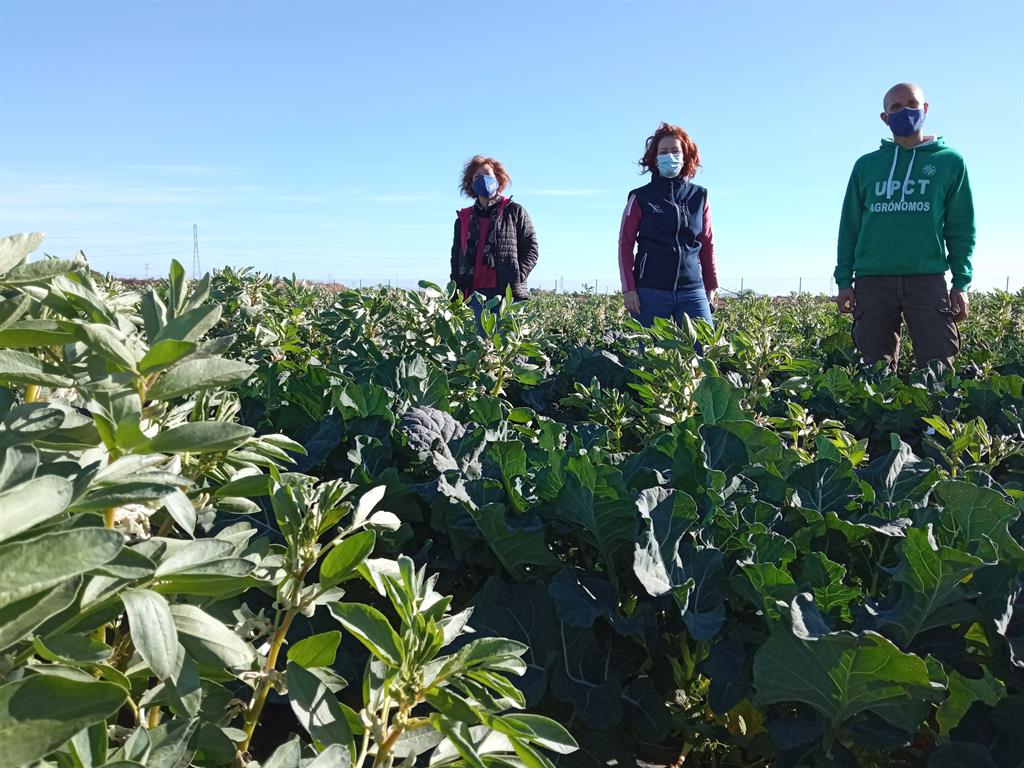The AsociaHortus project certifies the benefits for the farmer and for biodiversity of combining crops at the same time
CARTAGENA (MURCIA), 10 Feb. (EUROPA PRESS) –
After three years of trials with associated crops of broccoli and broad beans, in winter, and melon and mask bean, in summer, agronomists from the Universidad Poltécnica de Cartagena (UPCT) who develop the AsociaHortus national project have certified that this agricultural strategy achieves higher melon productions, since the legume flowers attract more pollinators, and increases soil fertility thanks to the associated crop’s ability to fix atmospheric nitrogen in the soil.
The objective of this project funded by the Ministry of Science and Innovation (AGL2017-83975-R) is “to increase the sustainability of horticultural systems by reducing fertilizers, phytosanitary products and water, also improving profitability”, explains the responsible researcher, Raúl Zornoza.
In the coming weeks they will harvest the third and last cycle of the association of broccoli with broad beans, in the same plot of the Tomás Ferro Agrifood Experimental Station of the UPCT where last summer they grew melon associated with cowpea bean or cowpea, when obtained a significant increase in melon production in relation to a melon monoculture, according to sources from the UPCT in a statement.
The broccoli crop associated with broad beans has maintained its production despite a 30% reduction in the fertilizers used, in addition to obtaining an additional bean crop.
The broad bean, once harvested, can be kept as a plant cover until the next crop, incorporating it into the soil as green manure. The legume also activates soil microorganisms that favor the mobilization of nutrients and improve the structure of the soil, which ensures greater water retention. At the same time, a natural fertilization of the crop takes place, as the bacteria present in the roots of the bean transform the nitrogen that they capture in the air into ammonium and nitrate that can be used by the plants.
IMPROVE BIODIVERSITY
“Both crop associations have shown to improve the organic matter content in the soil of the plot, with a greater presence of nutrients such as nitrogen and phosphorus, as well as an increase in the populations of beneficial microorganisms”, highlights the researcher Virginia Sánchez.
“We are verifying that the association of crops can reduce the number of applications of phytosanitary products, since the incidence of pests and diseases is reduced while the biodiversity increases”, explains the teacher of the School of Agronomists of the UPCT Josefina Contreras.
“The catches of thrips, aphids and whiteflies in the melon crop associated with cowpea were much lower than those of the melon monoculture,” he details. “We also found a greater number of natural enemies of pests, especially predators, such as beetles and lacewings,” he adds. “In addition, we found that the bean flowers increased the presence of pollinators, which led to an increase in the number of fruits, with the consequent improvement in production and crop yields,” he concludes.
The results of the tests have been communicated in the online congress ‘Intercropping for Sustainability’, organized last month by the British Association of Applied Biologists, and will also be disclosed in an information day on diversification in horticultural crops, open to any interested party, although focused on farmers and professionals of the associated industry, which will be held online on Wednesday, February 10, at 6:00 p.m., and which can be accessed from the link ‘https://cutt.ly/UhAuRgj‘.
–


